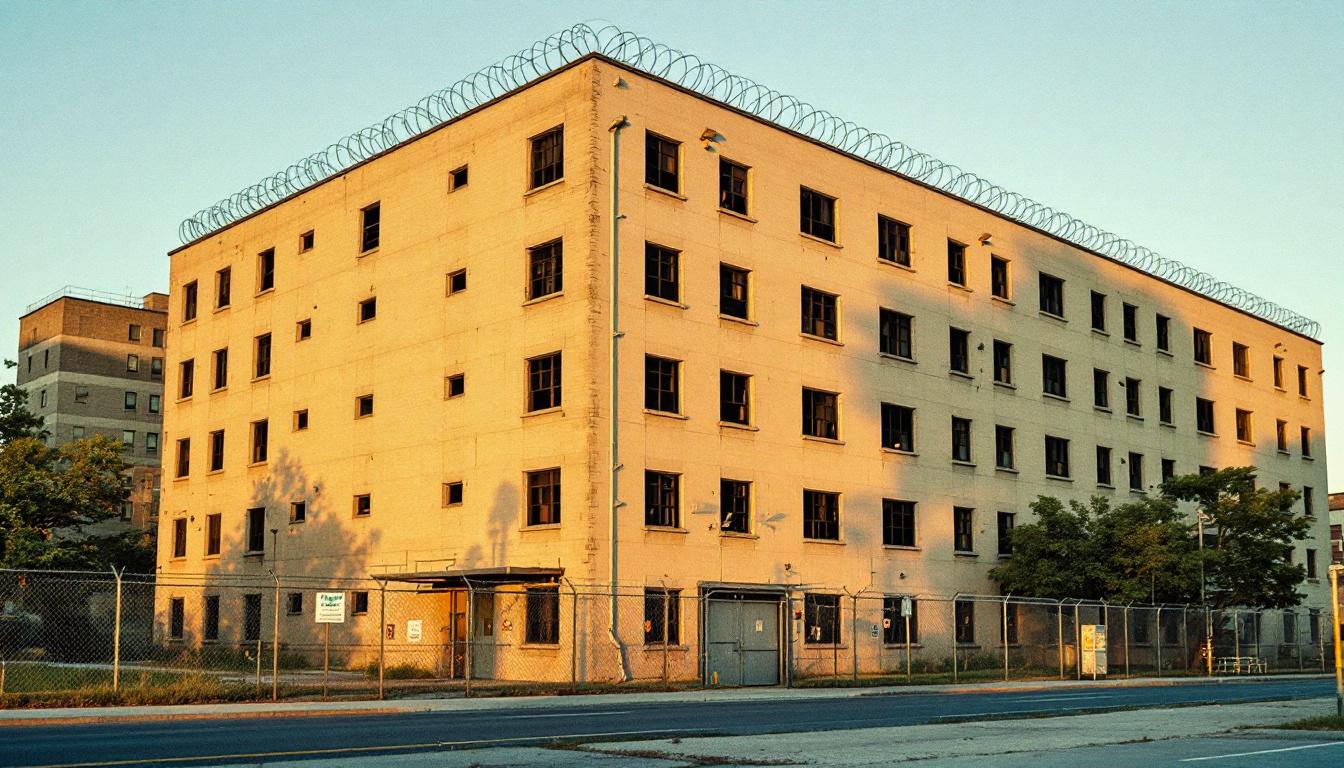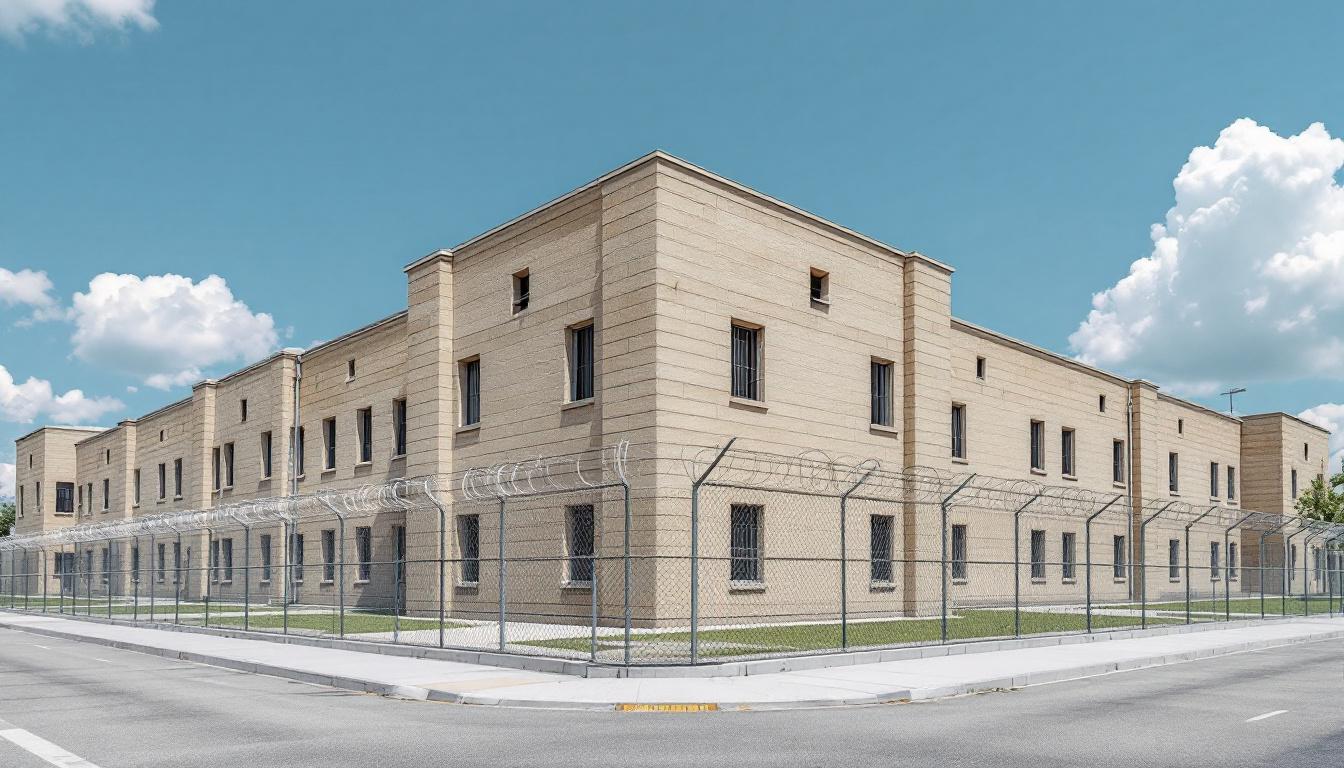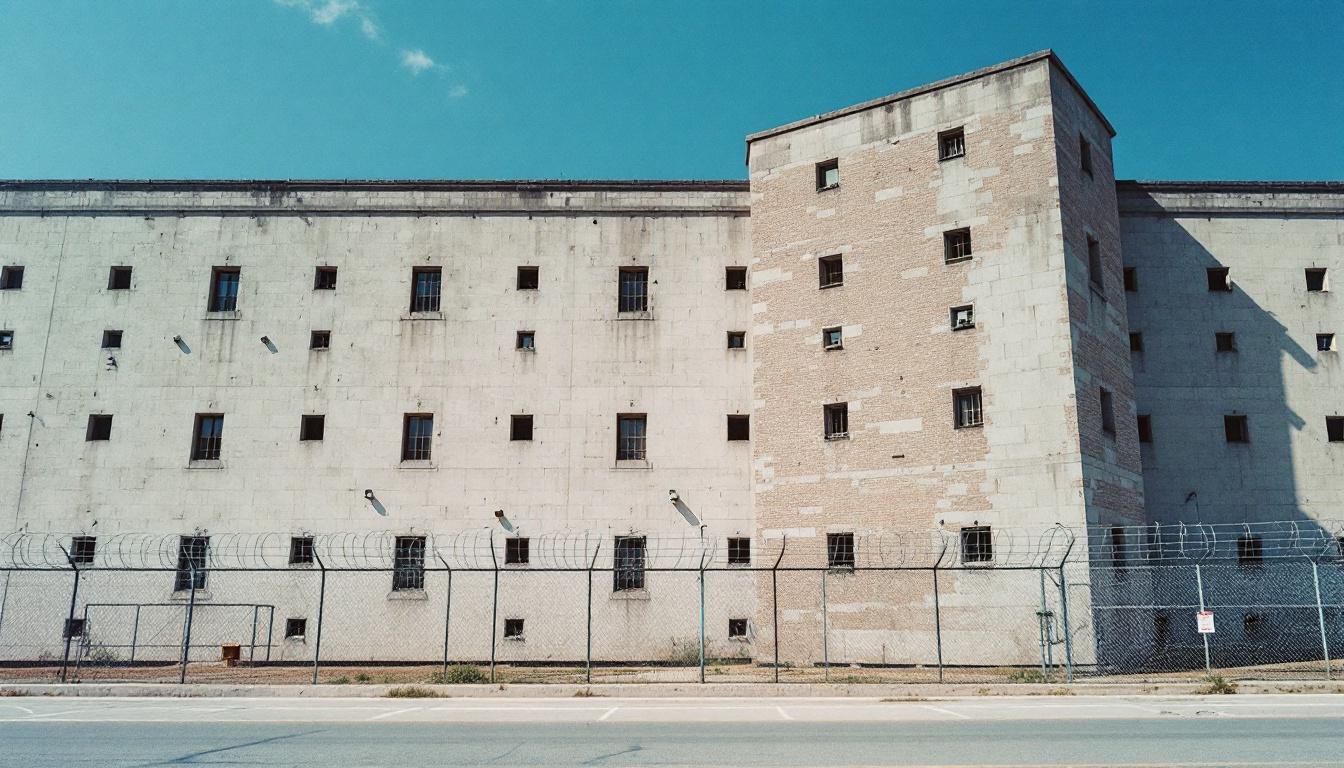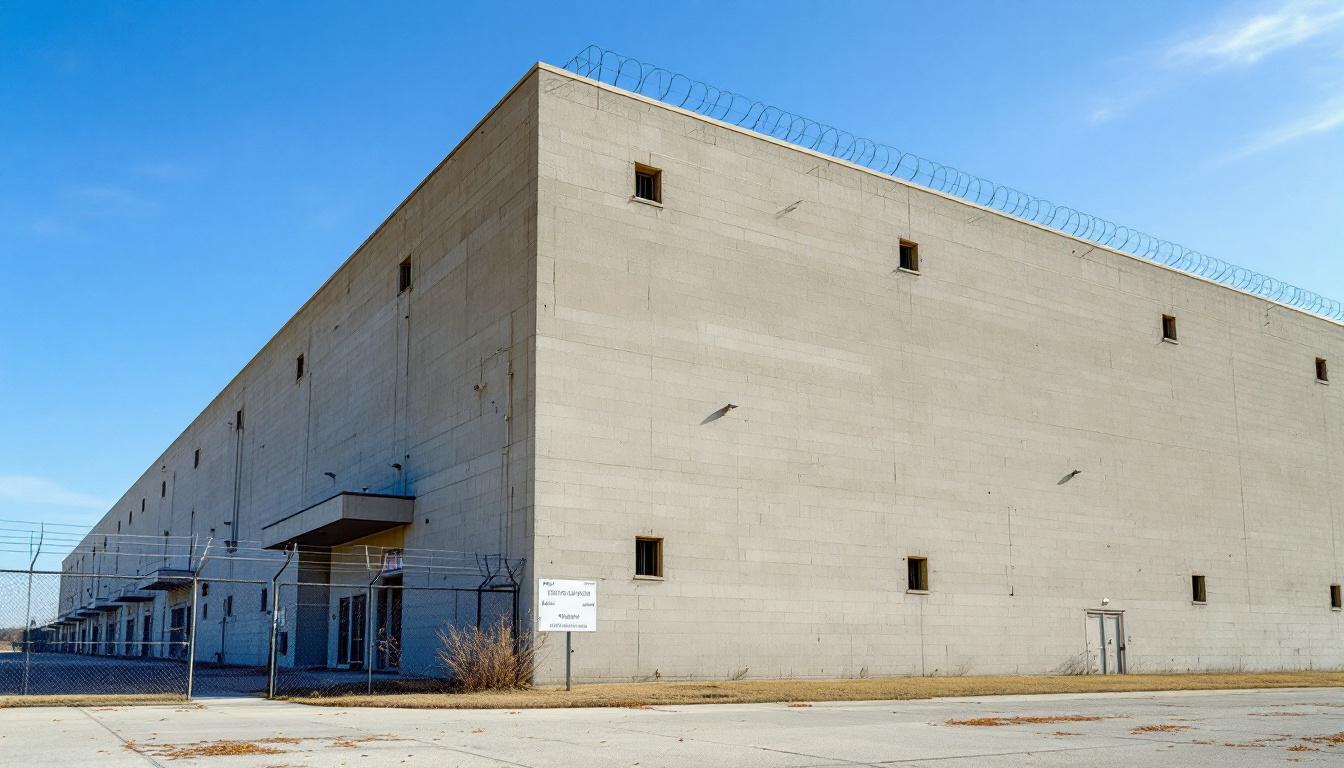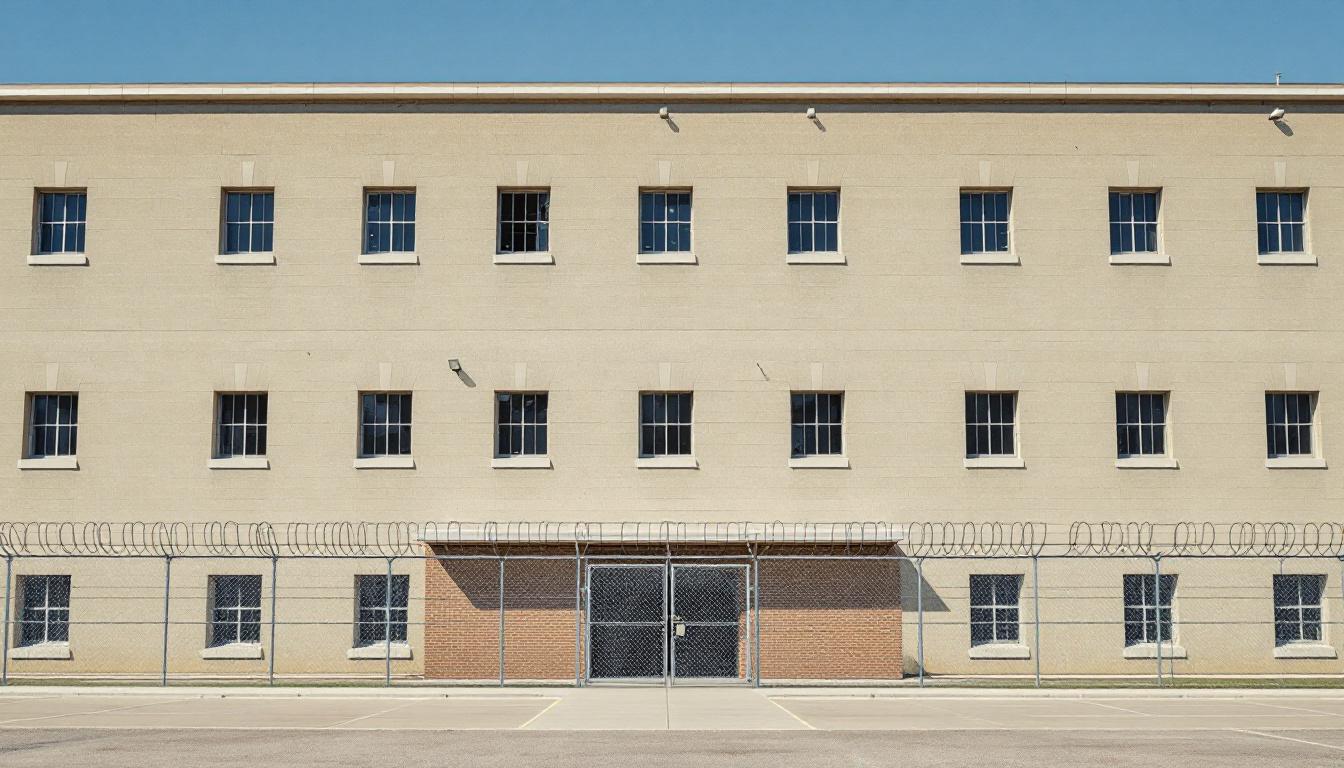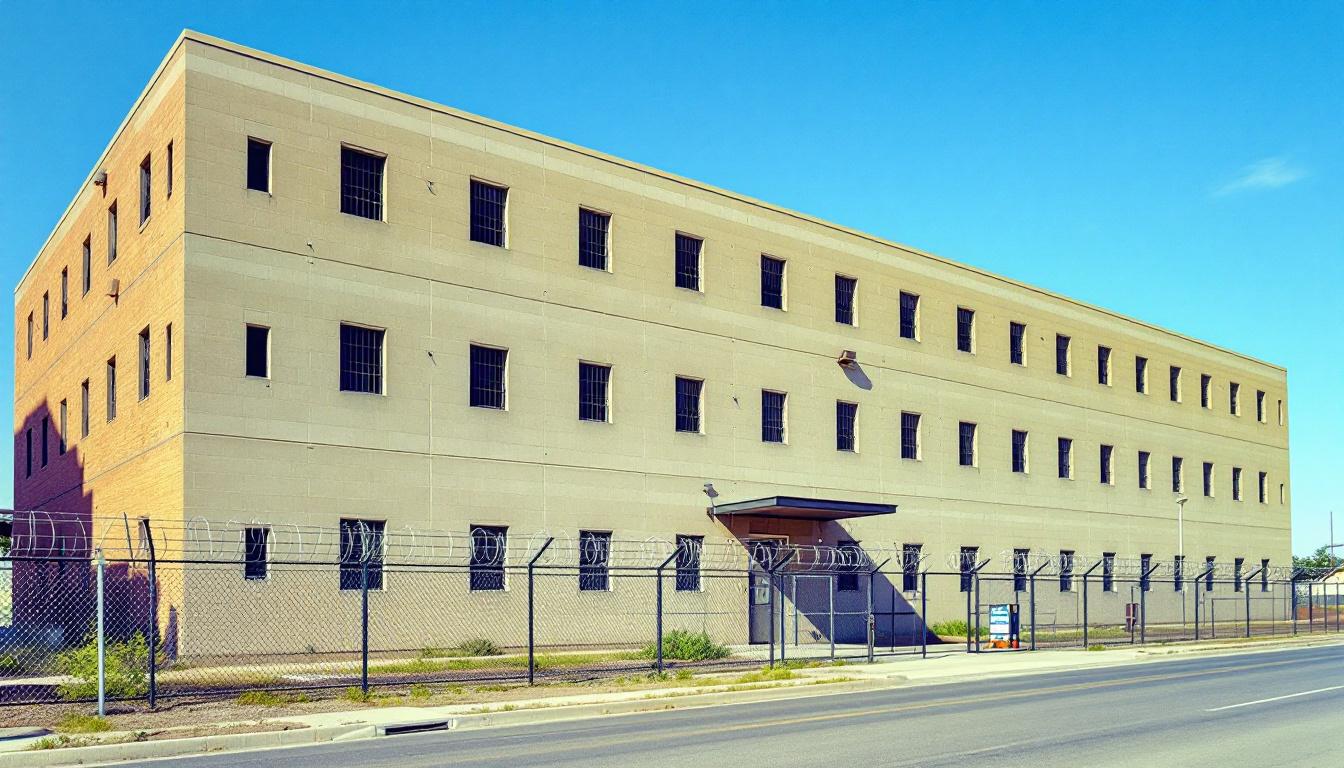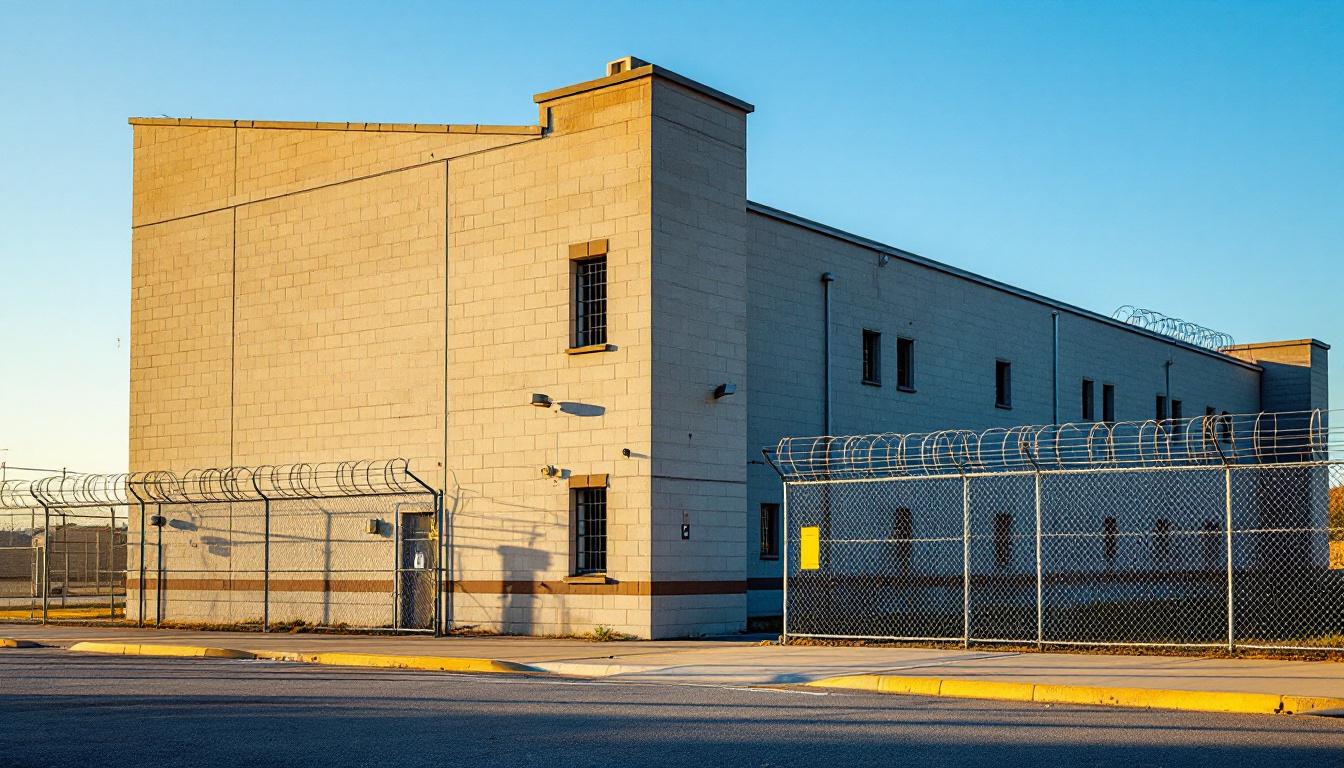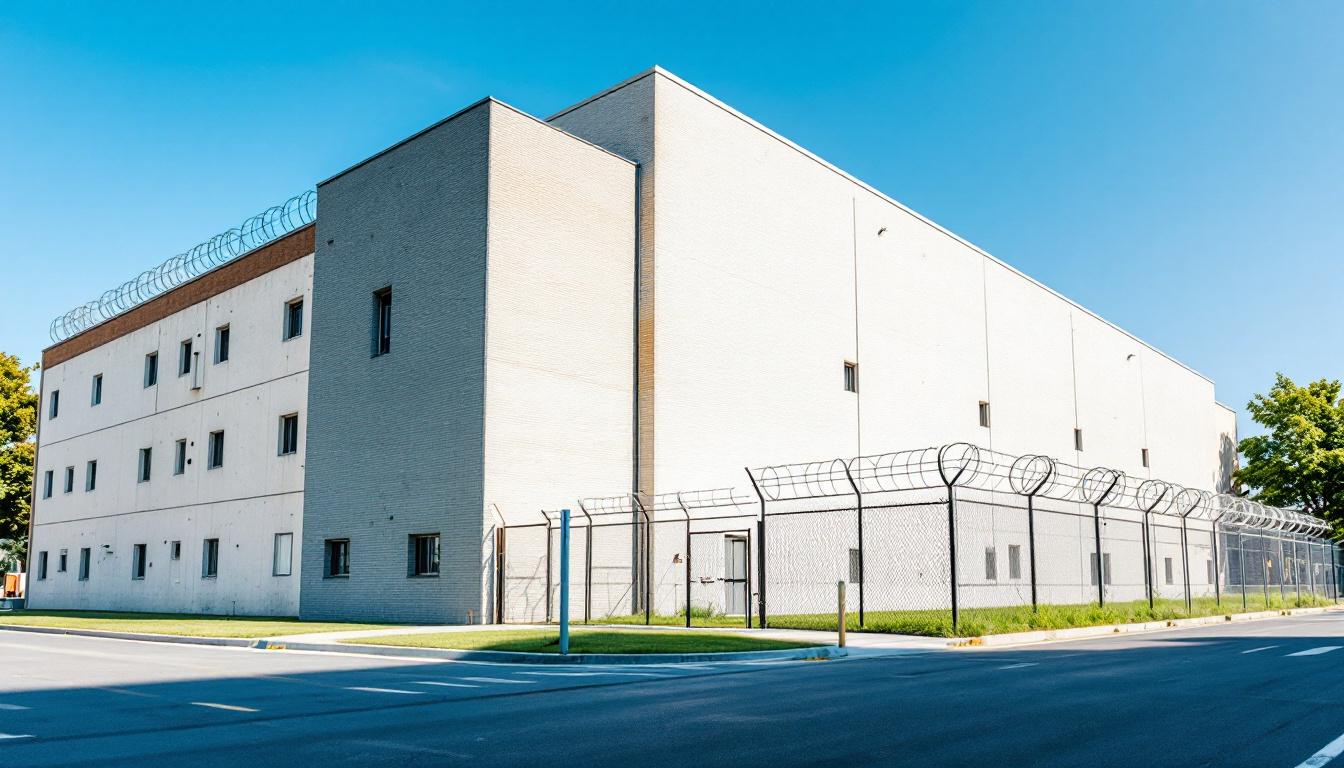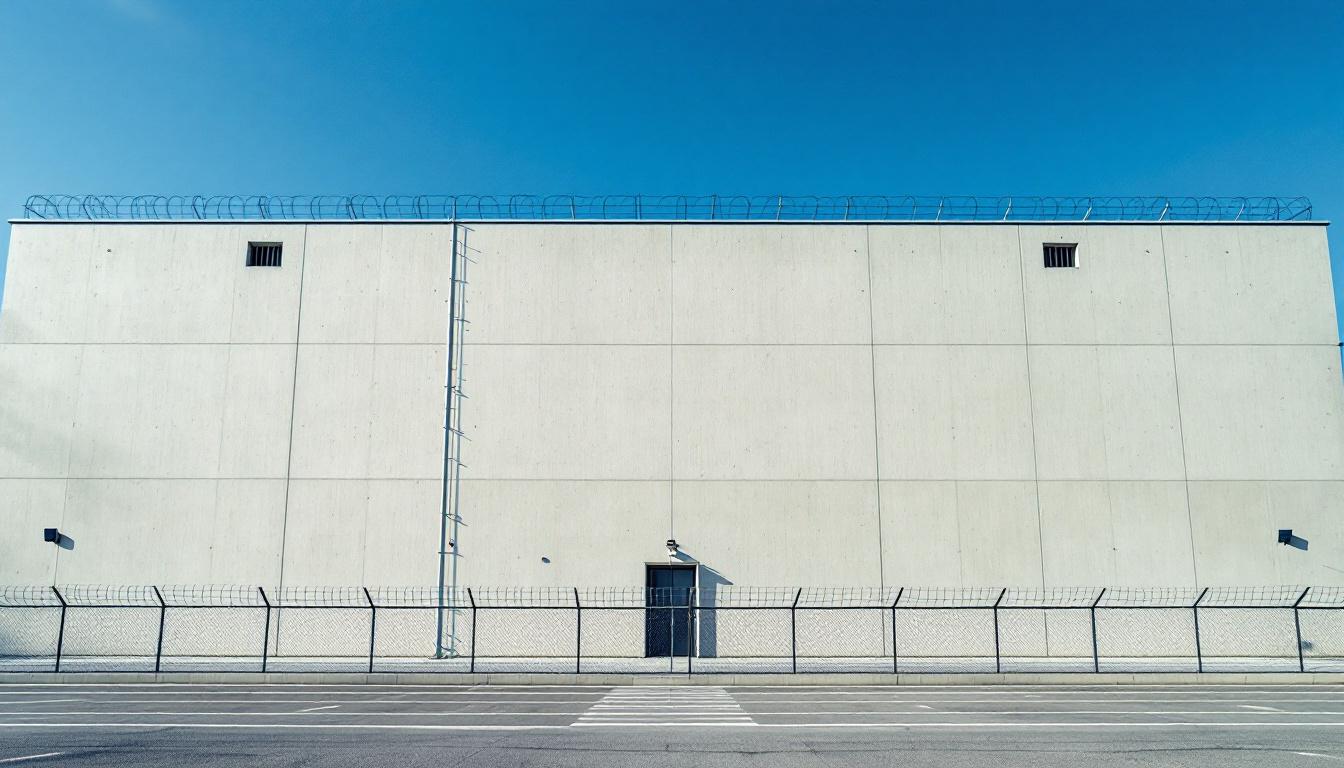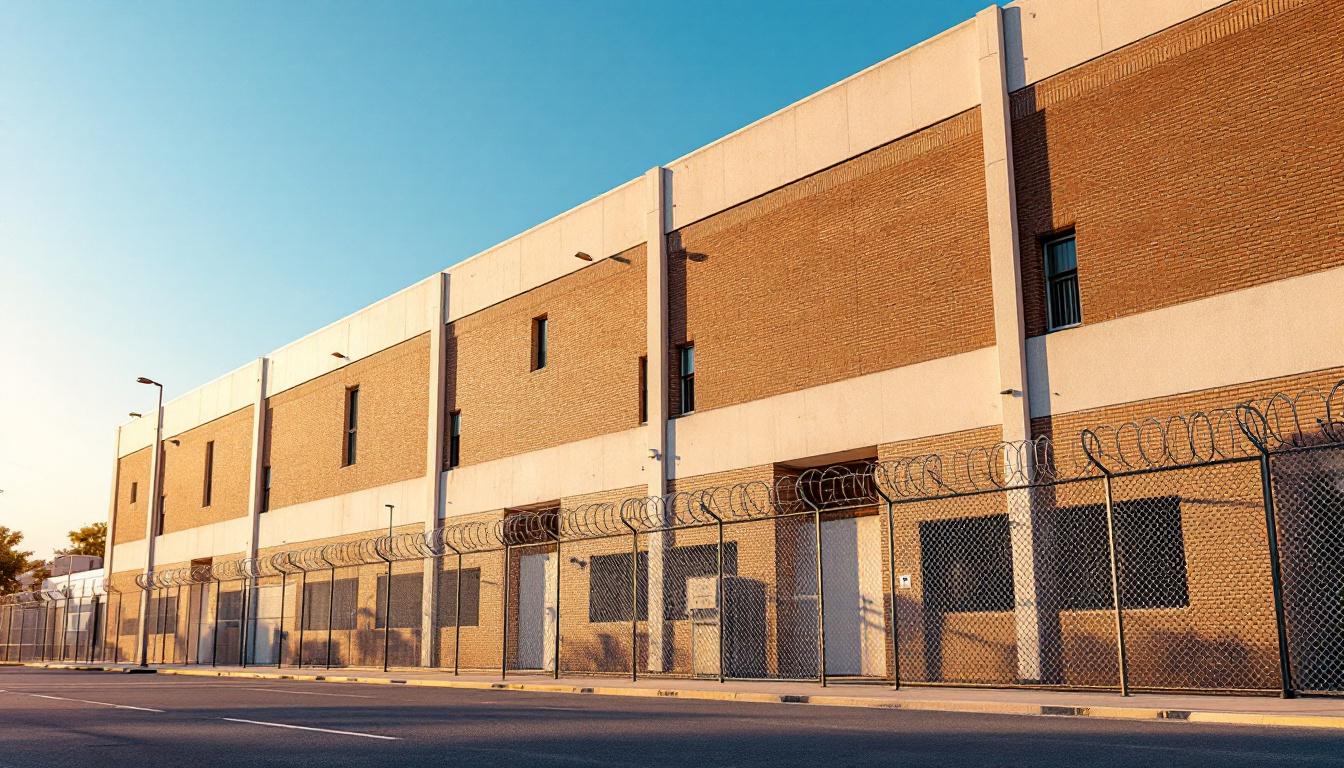
Quick Navigation
How to contact an inmate at Oklahoma county detention center
This comprehensive guide will walk you through how to connect with an inmate at Oklahoma county detention center. Follow the steps below to find an inmate and send letters and photos:
- Search for the inmate using our search tool below
- Create your account or log in to Penmate
- Write your message (up to 6,000 characters)
- Send instantly - inmates receive printed copies daily
Find an Inmate
Search for an inmate to start communicating today
Tip: You can search by first name, last name, or inmate ID number
To contact a person at Oklahoma county detention center start by searching for the person on the official facility website. Perform a search by following these steps:
- Step 1: Enter their first name and last name into the search form and click "Search"
- Step 2: Locate their inmate record
- Step 3: Write down their Inmate ID and any housing information provided
Important! Be sure to enter the person's full name. Nicknames should not be used.
How to Send Messages to Inmates

You can use your phone or computer to send emails, letters, and photos to an inmate. Messages are sent electronically to inmate tablets or kiosks at the facility. If you would like to send a message, start by searching for an inmate at Oklahoma county detention center.
Sending Photos and Postcards

A great way to send love and support to a loved one at Oklahoma county detention center is to send photos and postcards. It only takes a few minutes to send photos from your phone and it makes a huge difference. You can also mail postcards with words of support and inspiration, or design your own postcard for special moments like birthdays and holidays.
Important! Be sure not to send any explicit photos or they may not be approved by the facility. You can also use a photo printing app like Penmate to make sure your photos are printed at the correct size (4x6 or 3x5) and are mailed according to the rules and regulations of Oklahoma county detention center.
Frequently asked questions about Oklahoma county detention center
-
How long does it take to deliver a message?
If you're sending an email message your letter is usually delivered within 24-48 hours. For messages sent via mail you should expect delivery within 3-7 days. All messages will need be approved by Oklahoma county detention center.
-
How much does it cost to send a message to Oklahoma county detention center?
You can send a message free using your phone or mail a message via USPS for the price of a $0.60 stamp and envelope. You can also purchase credits or e-stamps from services starting at $1.99.
-
What services can I use to contact an inmate at Oklahoma county detention center?
Penmate
You can use Penmate to send letters and photos to an inmate from your phone. It's an easy way to stay in touch during your loved one's incarceration. Use the inmate locator to find an inmate's location and contact information, then you can send messages within a few minutes.
Securus messaging
Securus may be another option for communicating with an inmate at Oklahoma county detention center. You can create a friends and family account and purchase credits to send messages. All messages will be reviewed and must be approved by the facility.
JPay
Some county jails and state prisons may support sending messages with JPay. You must register an account with the system, find your loved one, and purchase stamps to send messages. For some locations you can also attach photos.
Smart Jail Mail
You may also check if Smart Jail Mail is available at Oklahoma county detention center. Smart Jail Mail is operated by Smart Communications and has contracted with some state and county jails. After purchasing credits, your messages and photos are sent to the facility, printed out, and then handed out to your loved one.
-
What is the mailing address of Oklahoma county detention center?
Mailing address:
Oklahoma county detention center
201 N Shartel Ave
Oklahoma City, OK 73102
Phone: (405) 713-1930Business hours:
- Monday: Open 24 hours
- Tuesday: Open 24 hours
- Wednesday: Open 24 hours
- Thursday: Open 24 hours
- Friday: Open 24 hours
- Saturday: Open 24 hours
- Sunday: Open 24 hours
-
What are the visiting hours at Oklahoma county detention center?
Visiting hours at Oklahoma county detention center vary by housing unit and security level. Generally, visits are scheduled on weekends and holidays, with some facilities offering weekday visits. Contact the facility directly at (405) 713-1930 or check their website for the current visiting schedule. Visits typically last 30-60 minutes and must be scheduled in advance.
-
What items are prohibited when sending mail to Oklahoma county detention center?
Prohibited items typically include: cash, personal checks, stamps, stickers, glitter, glue, tape, staples, paperclips, polaroid photos, musical or blank greeting cards, hardcover books, magazines with staples, and any items containing metal or electronics. Only send letters on plain white paper with blue or black ink. Photos must be printed on regular photo paper (no Polaroids). Always check with Oklahoma county detention center for their specific mail policies.
-
How do I send money to an inmate at Oklahoma county detention center?
You can send money to an inmate at Oklahoma county detention center through several methods: 1) Online using JPay, Access Corrections, or the facility's approved vendor, 2) Money orders mailed directly to the facility with the inmate's name and ID number, 3) Kiosks located in the facility lobby, or 4) Over the phone using a credit or debit card. Fees vary by method, typically ranging from $2.95 to $11.95 per transaction.
-
Can I schedule a video visit with an inmate at Oklahoma county detention center?
Many facilities now offer video visitation as an alternative to in-person visits. At Oklahoma county detention center, video visits may be available through services like Penmate, Securus Video Connect, GTL, or ICSolutions. Video visits typically cost $10-20 for 20-30 minutes and must be scheduled in advance. You'll need a computer or smartphone with a camera and reliable internet connection. Contact the facility for their specific video visitation policies and approved vendors.
-
What identification do I need to visit an inmate at Oklahoma county detention center?
All visitors must present valid government-issued photo identification such as a driver's license, state ID, passport, or military ID. Minors must be accompanied by a parent or legal guardian who can provide the minor's birth certificate. Some facilities require visitors to be on the inmate's approved visitation list, which may require a background check. Contact Oklahoma county detention center for specific ID requirements and visitor approval procedures.
-
How can I find out an inmate's release date?
To find an inmate's release date at Oklahoma county detention center, you can: 1) Use the online inmate search tool if available, 2) Call the facility's records department, 3) Contact the inmate's case manager or counselor, or 4) Have the inmate provide this information during a call or visit. For privacy reasons, some facilities only release this information to immediate family members.
Facility Overview
Contact Information
Oklahoma county detention center201 N Shartel Ave
Oklahoma City, OK 73102
Phone: (405) 713-1930
Official Website
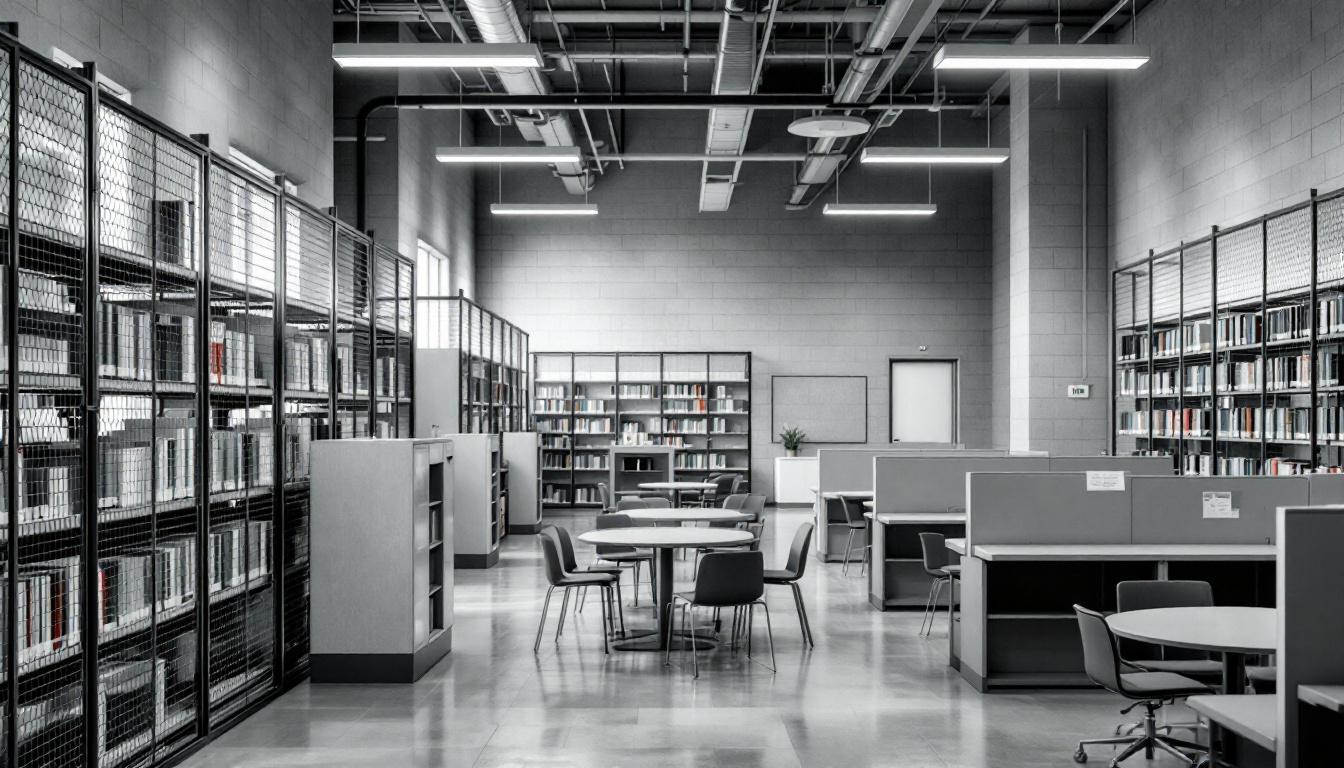
About Oklahoma county detention center
Dedicated to transformation and challenging negative perceptions, the Oklahoma County Detention Center prioritizes professionalism, transparency, and ethical conduct within its operations. This commitment to positive change extends through fostering a safe and empathetic environment while upholding values of respect, integrity, and accountability. The facility actively works toward overcoming obstacles, engaging with the community, and advocating for positive reform in the criminal justice system.
Based in Oklahoma City, Oklahoma's vibrant state capital, the Oklahoma County Detention Center serves as the primary detention facility for the county's correctional needs. The facility provides essential services including inmate search capabilities through their Jail Tracker system, warrant processing, and bonding procedures. Their comprehensive approach includes maintaining daily blotter reports, processing court dates, and operating a tip hotline to ensure the safety and security of inmates, staff, and the facility itself.
The detention center emphasizes transparency and accountability in its service delivery, striving to positively impact the lives of all individuals within the facility. Through various inmate programs and services detailed in their inmate handbook, the facility works to cultivate a positive culture while maintaining the security standards expected of a county-level correctional institution. Their ongoing initiatives focus on rebuilding trust and making meaningful impacts within the broader criminal justice system.
Programs & Services
The Oklahoma County Detention Center emphasizes transformation and positive change through its comprehensive approach to inmate programs and services. While the facility prioritizes safety, security, and operational excellence, it also focuses on cultivating a positive and empathetic culture that aims to positively impact the lives of all individuals in custody.
The detention center typically offers various educational and vocational programs designed to support rehabilitation and reentry preparation. These may include basic literacy courses, GED preparation classes, and vocational training opportunities that help individuals develop practical skills for employment upon release. Mental health and substance abuse counseling services are often available to address underlying issues that may have contributed to incarceration. The facility may also provide religious services and chaplaincy programs to support spiritual needs, along with library access and recreational activities that promote personal development.
Support services at the Oklahoma County Detention Center likely include medical and dental care, legal assistance resources, and visitation programs that help maintain family connections. The facility may offer job readiness training, life skills workshops, and case management services to assist with transition planning. Additionally, inmates typically have access to commissary services, telephone privileges, and mail correspondence to maintain contact with the outside community. These programs work together to create an environment focused on rehabilitation rather than solely detention, supporting the facility's commitment to positive reform and community engagement.
Daily Life & Visitation
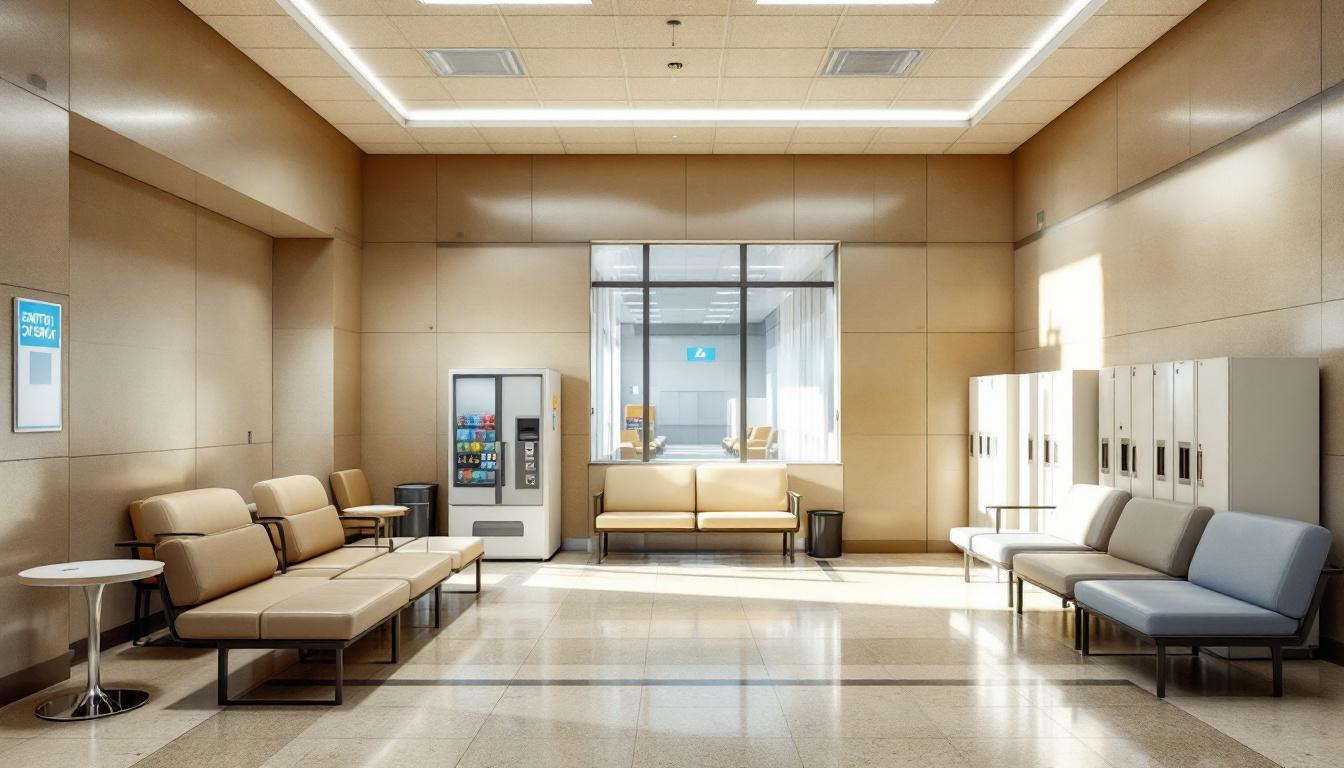
The Oklahoma County Detention Center in Oklahoma City operates with a focus on safety, security, and what they term "operational excellence" as part of their commitment to transforming facility culture. Inmates housed at this downtown facility can expect structured daily routines that prioritize both security protocols and rehabilitation opportunities, though the center emphasizes its ongoing efforts to foster a more positive and empathetic environment compared to traditional detention approaches.
Family members and friends can stay connected with inmates through established visitation procedures and communication systems. The facility maintains an online inmate search system called Jail Tracker, allowing loved ones to verify custody status and obtain basic information about those in detention. The center typically provides standard communication options such as phone calls and correspondence, though specific policies may vary based on security classifications and individual circumstances. Those needing to address concerns about inmate welfare or facility operations can utilize the anonymous tip hotline that the detention center maintains for safety and security matters.
Daily life at the facility revolves around structured schedules that may include meals at designated times, recreational periods when available, and access to various inmate programs and services outlined in the facility handbook. The Oklahoma County Detention Center has positioned itself as working toward positive reform within the criminal justice system, suggesting that daily operations likely incorporate elements aimed at rehabilitation and preparing individuals for eventual reintegration into the community, though specific program details would be available through direct contact with facility staff.
Ready to Connect?
Start communicating with your loved one today
Search for an Inmate
